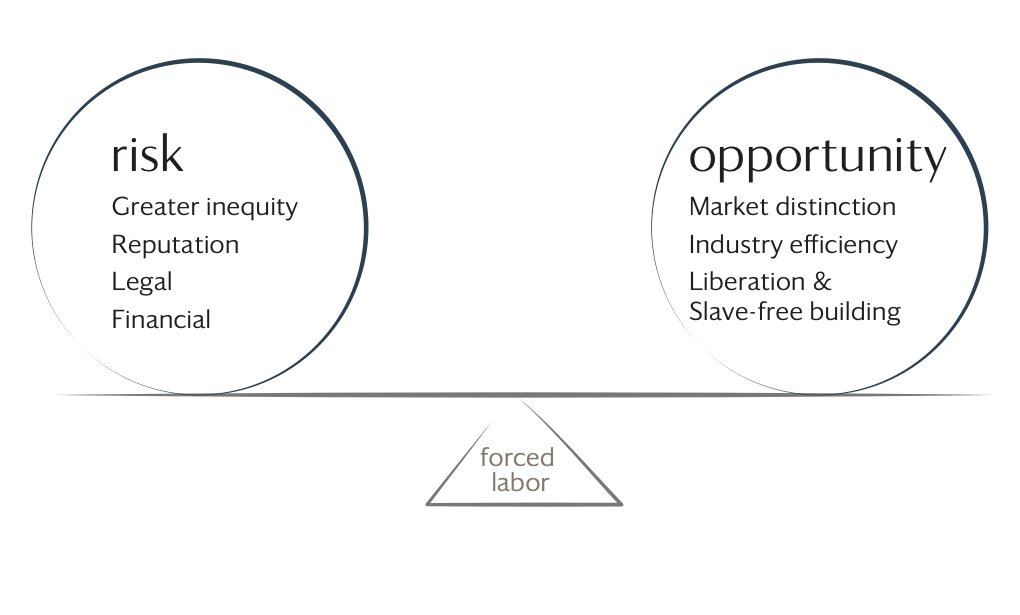Add humanitarian criterion to your business model
While prioritizing cost-efficiencies, delivery dates, and sustainability measures along the global building materials supply chain, valuing off-site labor in the supply chain has largely been overlooked. The perimeter around the job site is currently as far as the fair-labor lens extends.
Recent reports of high-profile wrongdoings should make everyone from owners to specifiers and engineers begin to consider the human impact that their projects have. Take, for instance, New York City’s iconic Brooklyn Bridge: the city was cited for renovating the bridge with wood tainted by slave labor. Also, recently, Lowe’s Home Improvement, the second largest U.S. material chain retailer, was called out for selling U.S. floor products with proven links to forced labor.1 As we incorporate humanitarian criterion into our business models, companies can avoid this type of reputation risk.
Protecting the environment is an opt-in material choice; whereas in the U.S., you cannot opt out of compliance on slave-free materials arriving in our ports. Forestry certification programs (notably FSC and PEFC) have moved the lumber industry towards protecting forests, and many third-party certifications consider toxic chemicals and energy consumption have improved both workers and consumers health. Now we need to expand Environmental, Social, and Governance (ESG) business models and incorporate social responsibility standards in the built environment to ensure our business models and leaders safeguard and dignify workers.
The construction industry is ripe for disruption, which presents a materials business opportunity in terms of new technologies and production methods. Paired with a slave-free lens, a significant impact-investing opportunity is at hand.

- Campos, André . “Suppliers of Lowe’s in the U.S .and Walmart in Brazil Linked to Slave Labor in the Amazon,” Repórter Brasil. March 15, 2017.